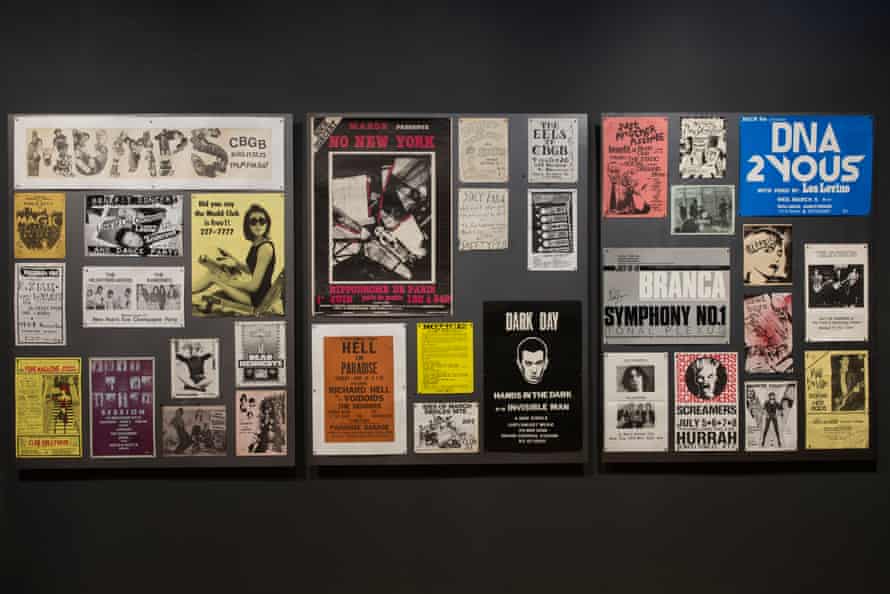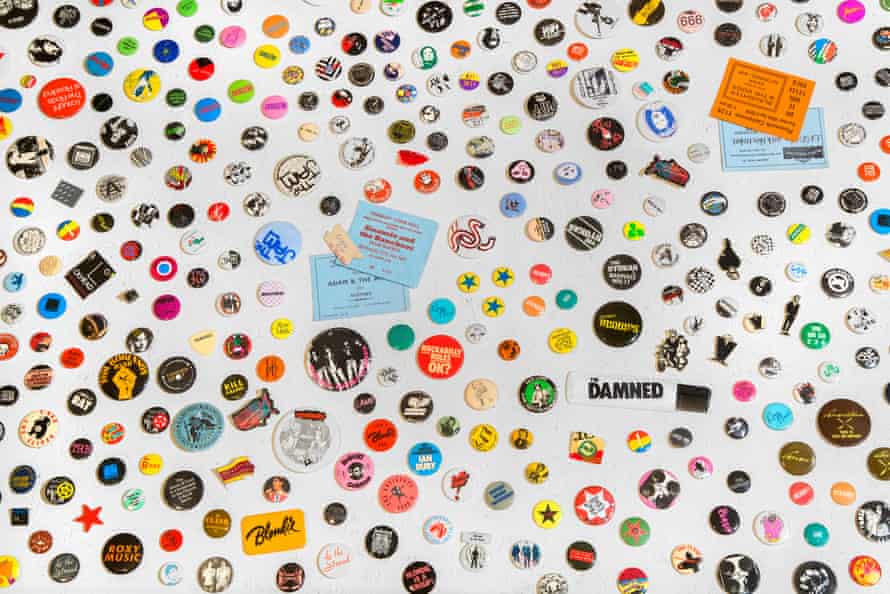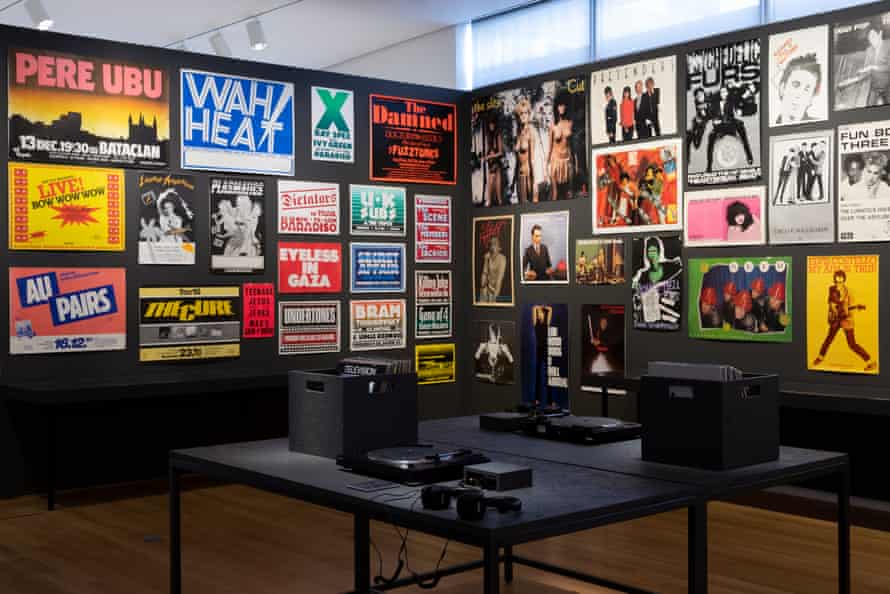80s Skate Punk Graphic Design
W hen you think of the most memorable figures of punk music, rarely do graphic designers come to mind. Now, the unsung design heroes who defined a raw music movement with cut-and-paste posters are on view at the Museum of Arts and Design in New York.
Too Fast to Live, Too Young to Die: Punk Graphics, 1976–1986 is a two-floor retrospective featuring over 500 posters, zines and vinyl covers from the New York and British punk scenes. From photocopied posters to magazine cut-out covers for the Sex Pistols, it traces the roots of political resistance and the ethos of punk from a micro scene to global phenomenon.
"One of the inaccuracies around punk is that it's a reaction to Margaret Thatcher and Ronald Reagan, but punk starts before those regimes take power in the mid-1970s," said the curator, Andrew Blauvelt. "Punk did become a reaction to neoconservative rule. It felt necessary at the time to provide a social resistance against some of those aspects against neoconservative policy, but had longer-lasting effects, as well."
On view until 18 August, these rare items hail from the collection of Andrew Krivine, a leading punk memorabilia collector. The Sex Pistols singer Johnny Rotten came to see the exhibition and told Rolling Stone that he has "no idea what they view as 'punk art,' and so why not?"
"Most collectors collect based on rock music history, but this collection is more sensitive to the graphic design behind it all," said Blauvelt. "I wanted to make an exhibit of graphic design, there isn't a strict chronology, it's not grouped by band, its grouped by strategy of visual design."

Designer Arturo Vega, who help shaped the punk aesthetic, is in the exhibition for designing the Ramones logo. "He was very much their creative director," said Blauvelt. "There was a lot of crossover between the art scene and the Lower East Side, where a lot of punk bands playing in New York. Bands like Devo and Talking Heads were all out of art school, there was a blurring of the art and music scenes."
In New York, artists such as Robert Longo designed album covers for musicians like Glenn Branca, while the photographs of Blondie's Chris Stein, who shot Iggy Pop and Debbie Harry, offer a record of punk hubs like CBGB.
There are also brightly colored silk-screened posters of Elvis Costello by Barney Bubbles and Chris Gabrin. "Those definitely have a nod to Andy Warhol in the Interview magazine era in the 1970s and 1980s, when there was a lot of color blocking with overlaid portraits," said Blauvelt.
British designers Malcolm Garrett, Peter Saville and Neville Brody were some of the most influential creatives working in the music business in the 1970s and 1980s. Garrett, who designed covers for bands such as the Buzzcocks, then later worked for Duran Duran, Peter Gabriel and Culture Club.
Jamie Reid, who designed the Sex Pistols covers Never Mind the Bollocks, Here's the Sex Pistols and the famous God Save the Queen cover featuring the Queen of England's eyes obscured by the name of the song, shook the country.

When the album rose to number one on the music charts, it was proof "there was genuine opposition to what was going on," Reid previously told the Guardian.
The exhibit also features Saville's legendary Joy Division covers, alongside works featuring David Bowie, the Clash and Iggy Pop.
Women in punk have a presence in the show, from the Slits to Lydia Lunch, Grace Jones and the Runaways. There are also female illustrators, like Linder Sterling, whose mashup collage from women's magazines graced the Buzzcocks 1977 single cover for Orgasm Addict.
Much of the copy and pasting culture that defined punk is rooted in the Dada collages of Hannah Hoch, says Blauvelt. "Sterling was sourcing works from lifestyle magazines and making gender commentary in the posters," said Blauvelt. "On one hand, it's a revival of this cut-and-paste strategy, in another way, it's a new time period."
"It's exactly what you want for a record sleeve, as soon as you see it you can't get the image out of your head," the band's singer Pete Shelley previously said. "It was all pretty top shelf back in 1977."

When punk first hit the market, it terrified the record industry, "but it generated a market," said Blauvet. "There became an opening for graphic designers to design without any rules. Typographic designers had more freedom. Album covers could be totally conceptual. You didn't use a corporate approach, or if you did, it was ironic."
The punk aesthetic also carries elements of futurism – just look at the constructivist posters of Kraftwerk – as well as German expressionism, Soviet-era posters, pop art and the Bauhaus design movement.
"If you were a small-town punk, how did you connect with the community?" asks Blauvelt. "I can't imagine today's DIY culture emerging without punk. It felt liberating around the need to communicate the resistance."
Graphic design is often a thankless job behind the brand name of the client, punk bands included. These names are rarely remembered beyond industry buffs, so putting the names of designers on the walls of a museum is not entirely common. However, the designers did much more than just sell an album.
"People ask: where does this movement come from?" said Blauvelt. "It was all against the systemic control of the music system. This idea of provocation in the streets, the field of punk was a social protest, elements of that still exist."
But is punk dead? In our polished Instagram-savvy world, one wonders if this is simply looking back on a long-lost analogue era.
"Punk never dies. It's kind of the living dead," said Blauvet. "It's about a disaffection with the older generation and the status quo, if you will. It will always be alive."
Source: https://www.theguardian.com/artanddesign/2019/apr/25/punk-never-dies-celebrating-the-revolutionary-art-of-an-era